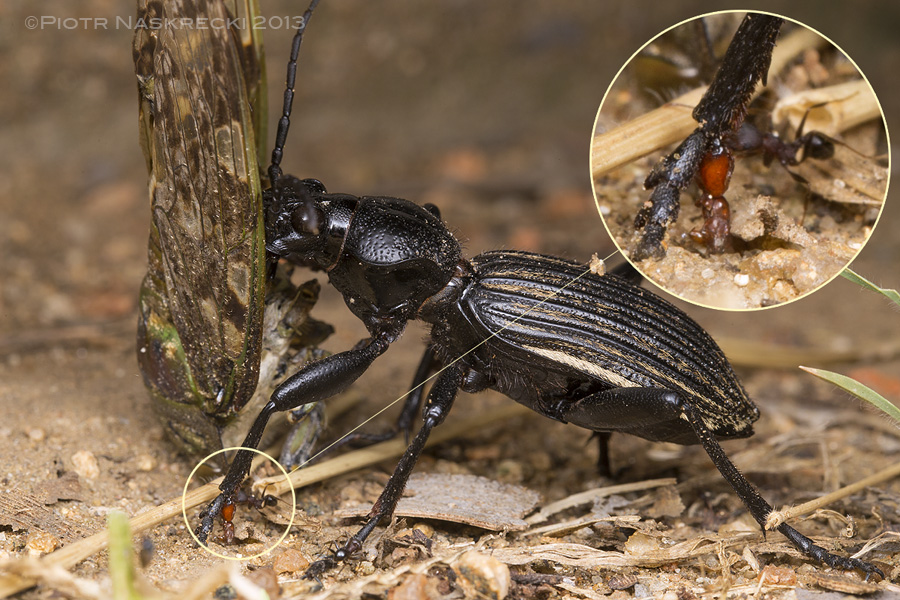
Recently I have been processing some of the 18,000+ photos I took during a recent trip to Mozambique, and yesterday one image caught my eye. It shows a large ground beetle carrying a dead cicada. I shot it rather casually one night in front of my tent in Gorongosa, and immediately forgot about it. But now, looking at it closely, I realized that I was guilty of the very same thing that I often preach against – I did not pay enough attention to the small things, and missed an interesting detail. Zooming in on the photo I noticed several ants milling around the beetle’s feet. More interestingly, one of the tarsi had a dead driver ant (Dorylus) permanently attached to it – the beetle had survived an attack by these notoriously vicious insects, which was quite impressive. But what were the other ants doing? I guess I will never know. I have made the same mistake in the past, where I would notice something interesting about the scene that I had shot, but only when it was much too late to go back and photograph it again.
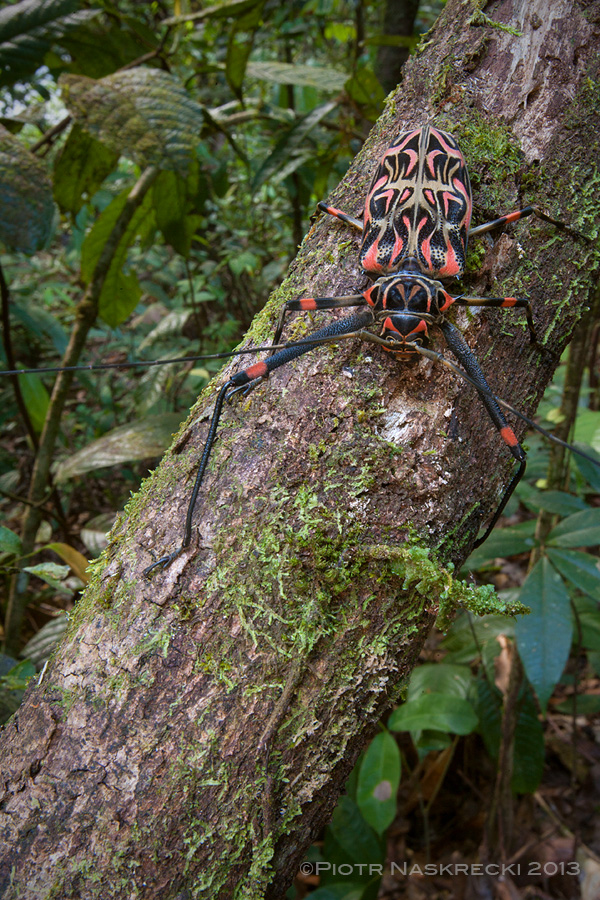
But there is one thing that greatly helps in preventing this from happening – as Louis Pasteur succinctly put it, “In the field of observation, chance favors the prepared mind.” In the field of nature photography, the more you know about your subject, the more likely you are to notice something interesting or unusual, and refocus on that. My best example comes from Guyana, where a few years ago I found a gorgeous Harlequin beetle (Acrocinus longimanus). After taking a few photos of the animal I was about ready to let it go when suddenly some microscopically tiny object ran across its body. I felt a spark in my brain reignite some old, long unused synapses, and recollections started flooding in – “That looked like a small scorpion. No, a pseudoscorpion. They are phoretic. One species is found only on Harlequin beetles. Cordylochernes scorpioides, that’s it!”
Large fig trees in South American rainforests serve as hosts to the spectacular Harlequin beetle, which completes its larval development in the wood of these plants. The body of this giant insect is in itself a vibrant ecosystem for several species of smaller animals. Hundreds of mites hide under the wings and in crevices of the beetle’s body, using the insect as a convenient way to move from place to place. The mites also serve as food for another passenger, the pseudoscorpion. But the mites are not the main reason why pseudoscorpions embark on the beetle’s back.
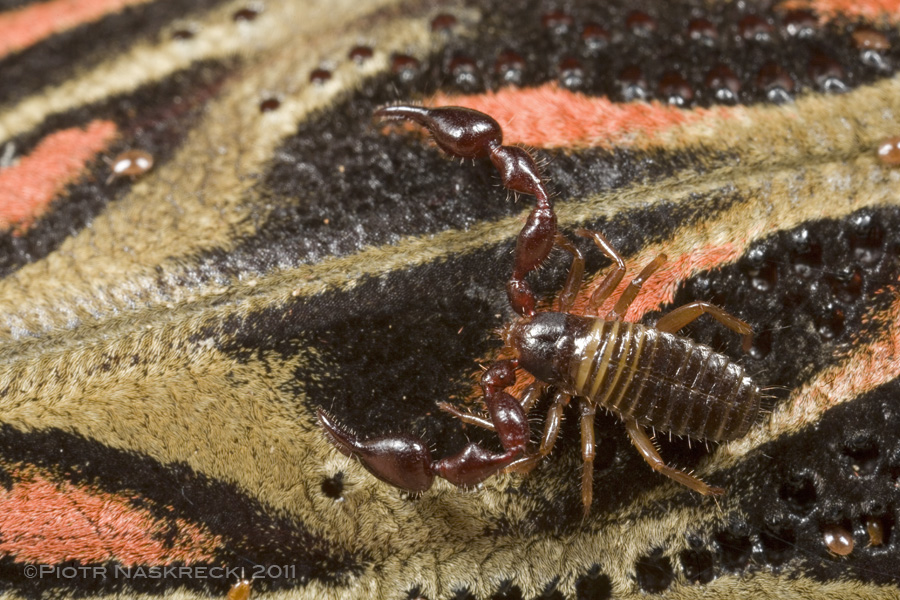
These arachnids spend their lives on the same fig trees that the beetles need to develop and where they seek mating partners, and thus the pseudoscorpions can be assured that by hitching a ride on a harlequin beetle they will end up on another tree of the same species. This also means that the beetle’s back is a great place to meet new partners who hopped on it to look for new fig trees to colonize, and a lot of sexual activity takes place among pseudoscorpions under the covers of the beetle’s wings. Some male pseudoscorpions never leave the beetle because they know that with each landing on a fig tree new females will embark, giving them more chances to pass on their genes. And because some time ago I had read a study that described all this, I did not miss the opportunity to photograph this fascinating symbiosis. Now, if only somebody wrote something about beetles and ants…
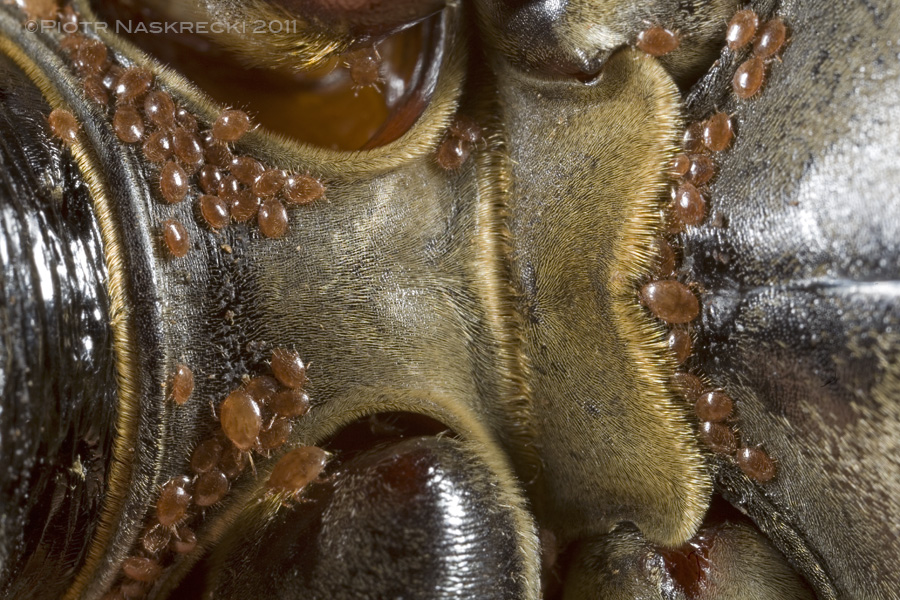
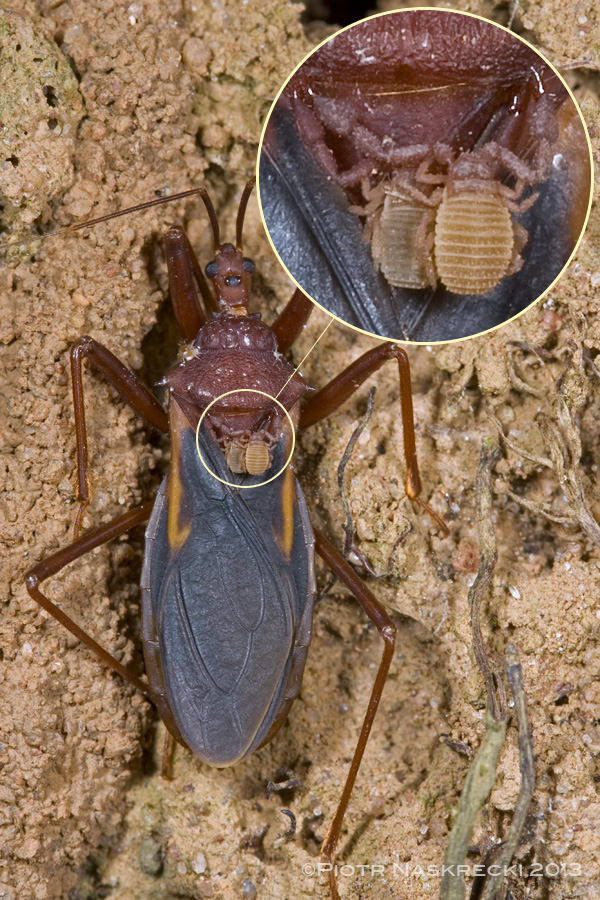

Reblogged this on Mark Solock Blog.
Very Cool!
Pseudoscorpions really seem to get around! I have found them on longhorn beetles and a friend of mine has found them on blowflies. Thanks for the reminder!